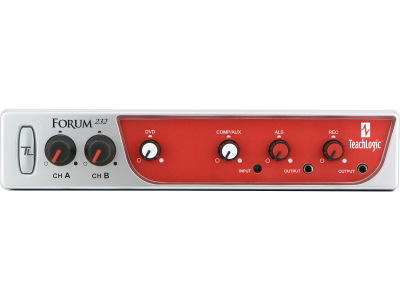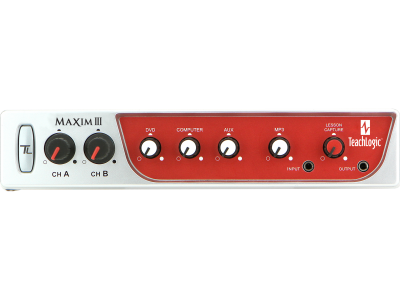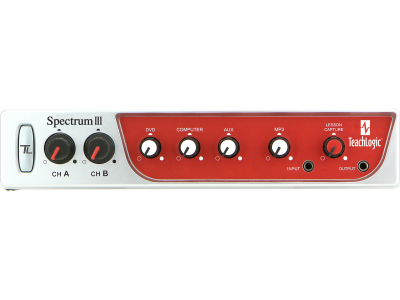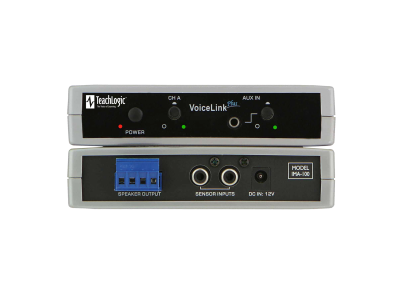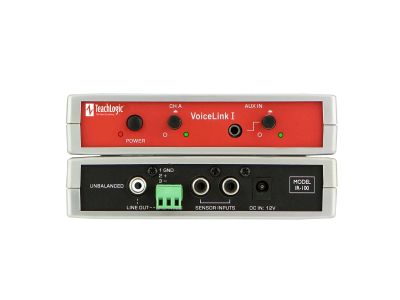[printfriendly]
Yes! These are the instructions to connect an already installed TeachLogic classroom audio system to a computer hosting a video conferencing application to synchronize classroom audio for online listeners. Using a TeachLogic wireless microphone allows the teacher to move freely around the room without affecting audio quality for the students.
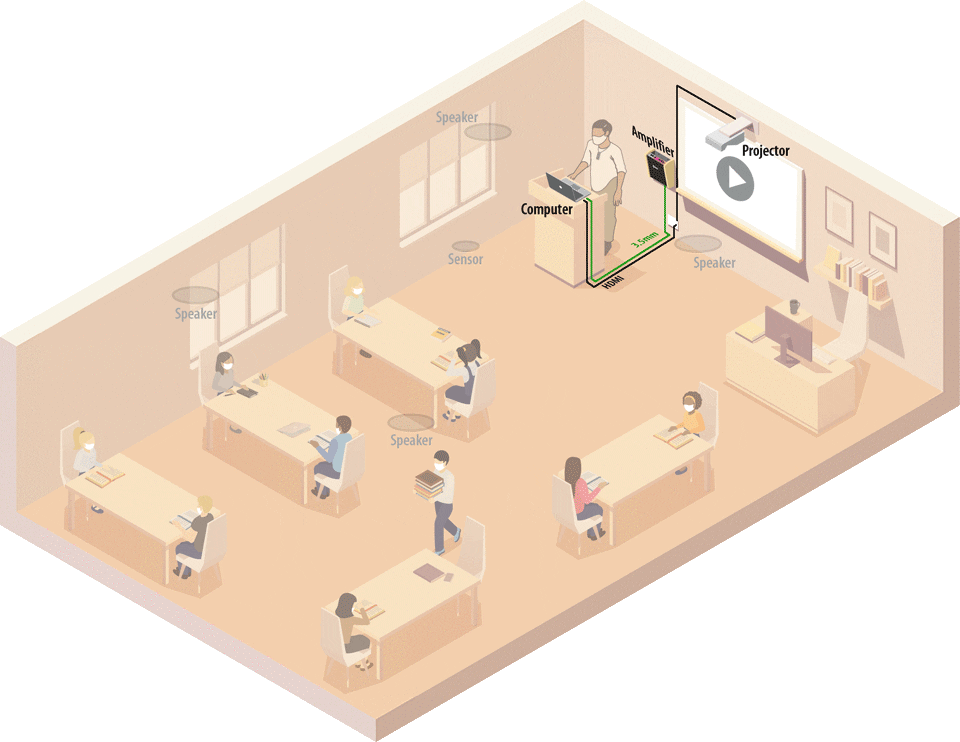
Compatible TeachLogic Systems
- Forum™
- Maxim™
- Spectrum™
- Matrix™ (IMA-120)
- Quantum™ II (IRC-360)
- VoiceLink™ I (IR-100) – requires existing audio system
Scroll to continue reading or download the PDF.
Synchronizing Audio for Hybrid Learning
All media devices connected to the TeachLogic amplifier (including microphones) will be heard by online viewers.
All audio—including devices connected directly to the computer—will play through the TeachLogic amplifier/receiver in the classroom.
- Amplifier Output > Computer Input: enables online learners to hear classroom audio including wireless microphones
- Computer Output > Amplifier Input: enables classroom learners to hear computer & conference audio
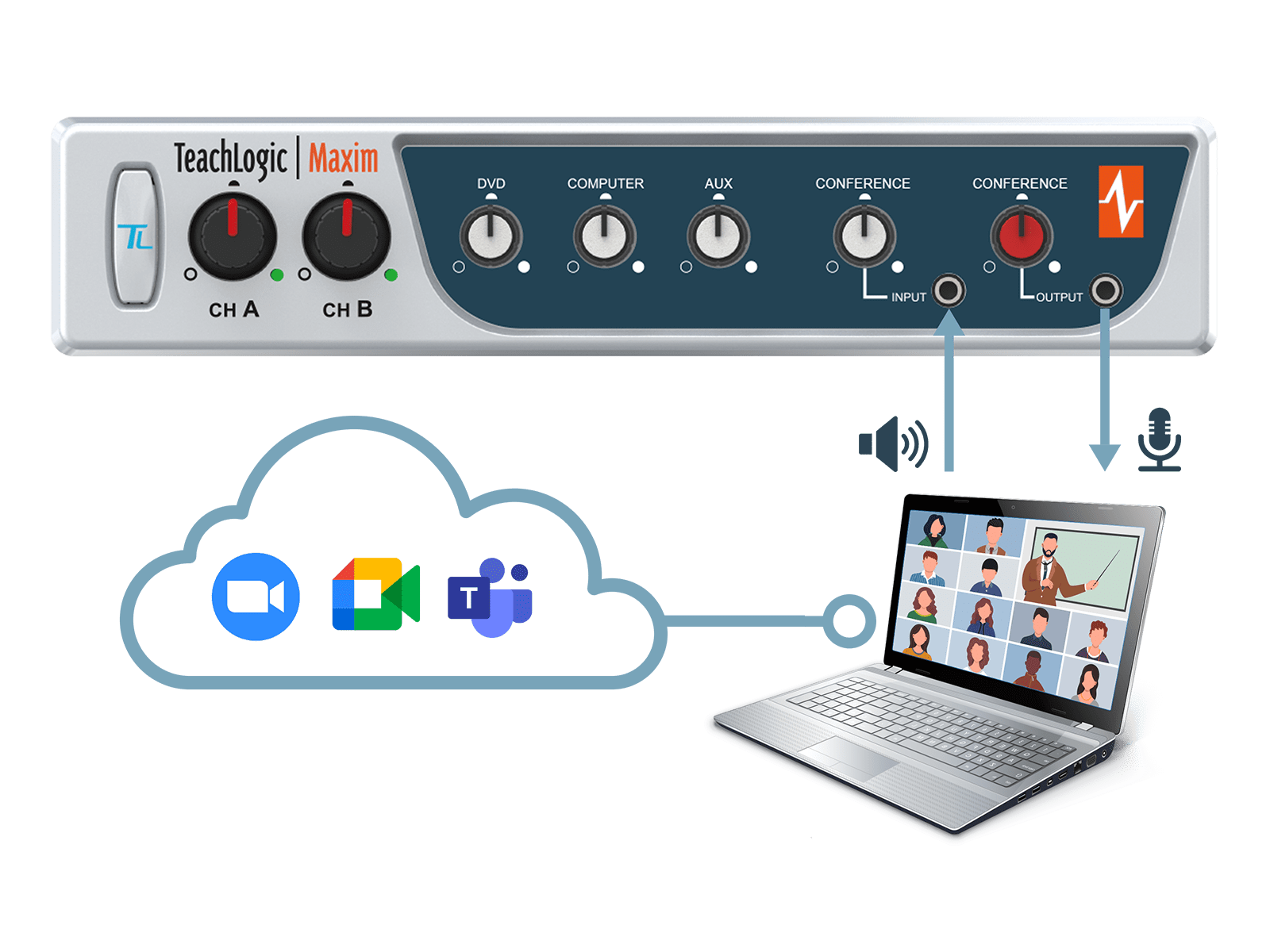
Planning
- Placement of the computer should be based on what needs to be visible on camera.
- Please note that moving any device might affect what cables are required to maintain the connection.
- Take care to measure the distance between the computer and the TeachLogic amplifier to ensure your audio cables will be long enough.
- Locate the computer audio connections. Determine if there are separate connections for an audio input & audio output or a single port.
- If there is a single port, an audio “splitter” that supports both a microphone and speaker connection will be required. See next sections for details on how to identify what cables you will need. See section below for help identifying your computer’s audio connections.
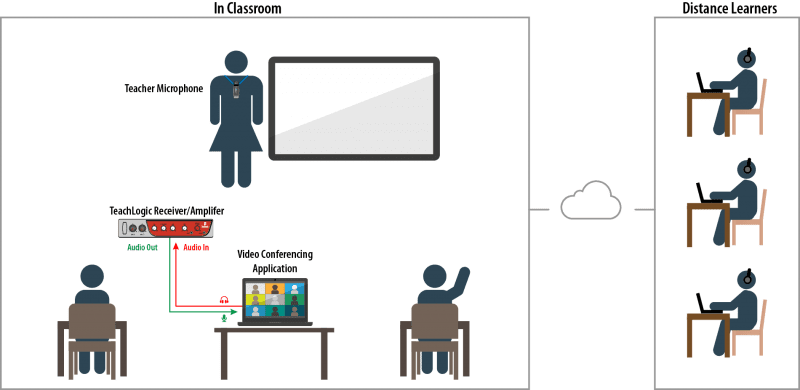
Computer Audio Connections
TeachLogic recommends a USB connection. USB simplifies cable management and most video conferencing applications automatically recognize a USB connection in their audio settings menu. We have seen success with this adapter.
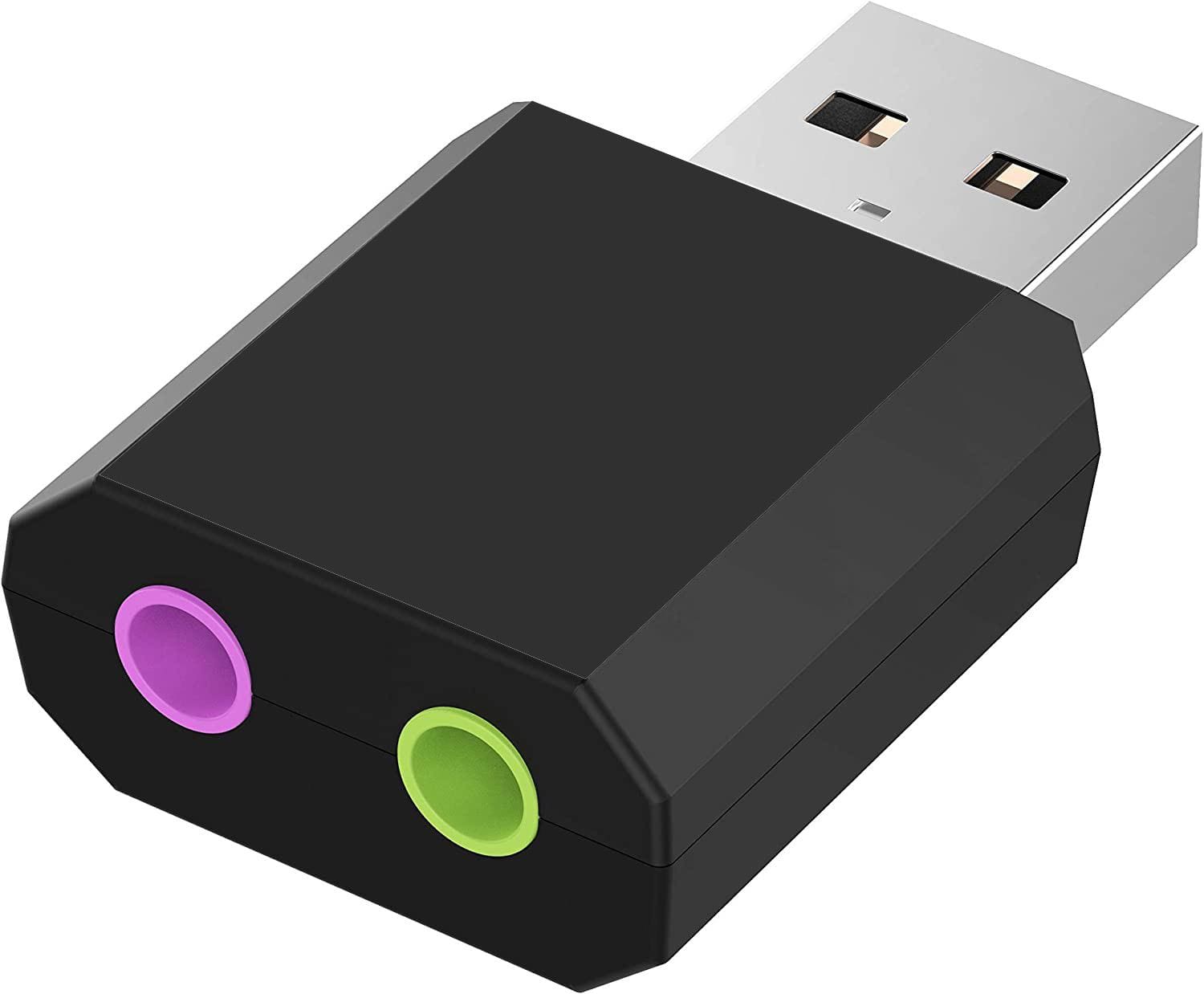
Audio Cable Requirements
After determining which splitter is needed, determine what additional cables are needed. See below for details.
Maxim, Spectrum, Forum, Matrix, Quantum II
- 2 x 3.5 mm-to-3.5 mm audio cables.
VoiceLink I
- 1 x male RCA-to-3.5 mm audio cable.
- 1 x 3.5 mm-to-3.5 mm audio cable.
Connecting The System
STEP 1: Mark one of the audio cables at both ends with tape, a sticker, or a marker. (if you are connecting a VoiceLink I, mark the RCA-to-3.5 mm cable.)
STEP 2: See below based on your TeachLogic amplifier:
Maxim, Spectrum, Forum
- Connect the marked 3.5 mm audio cable to an Output port on the TeachLogic amplifier.
- Connect the other 3.5 mm audio cable to an Input port on the TeachLogic amplifier/receiver.
- Go to STEP 3.
Matrix, Quantum II
- Connect the marked 3.5 mm audio cable to an Line Out port on the TeachLogic amplifier.
- Connect the other 3.5 mm audio cable to an Input port on the TeachLogic amplifier/receiver.
- Go to STEP 3.
VoiceLink I
- Connect the RCA end of the RCA-to-3.5 mm cable to the “Line Out” port on the back of the VoiceLink I.
- Connect the other 3.5 mm audio cable to the Input port on the front of the VoiceLink I.
STEP 3: Pick up the unconnected ends of the cables and way to the computer.
STEP 4: If using an audio splitter, connect that the applicable port on the computer.
STEP 5: Connect the the marked audio cable to the computer’s mic/audio input (this is the pink port and/or the one marked with a microphone symbol).
STEP 6: Connect the second cable to the computer’s speaker output (this is the green port and/or the one marked with a speaker symbol).
STEP 7: Verify all cables are seated properly and nothing came loose.
STEP 8: On the amplifier, set the gain control knobs for the Input and Output to the 10′ o click position.
Testing The Conference Audio
Each conference application and computer has its own settings. Settings may vary from application to application and computer to computer. Please refer to their respective user guides if you have trouble locating the settings.
This test will require a second person with another device to join the video conference.
STEP 1: Launch your video conference application and start a meeting. When in the conference, change both the microphone and speaker setting.
For a USB splitter, choose the “USB Audio Device” setting.
When no splitter or a 3.5 mm splitter is used, the proper setting is usually the name of the sound card manufacturer. “(Realtek(R) Audio)” in the example shown.
This may differ from computer to computer, so please test another setting if the first one chosen does not work.
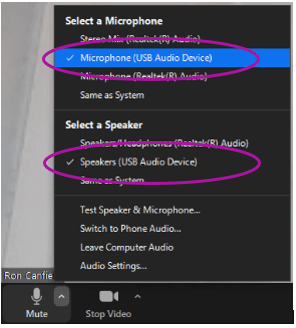
STEP 2: Set the computer’s volume to mid-scale (40-50%).
STEP 3: Invite the other person and have them leave the room. Turn on the TeachLogic microphone, place it at your collarbone (where it would naturally set) and begin speaking to the other person in the conference. They should hear you and you should hear them through the classroom speakers.
Be sure that the video conference “Mute” function is not active as that is sometimes the default setting at the start of a conference.
STEP 4: Verify that the person hears you through the TeachLogic microphone by muting the microphone (momentarily press the “TL” button to mute). If they can not longer hear you, the connection is successful.
Adjusting the Volume
- Amplifier microphone channel: Adjusts the microphone volume both in-class and on Zoom
- Amplifier audio Output: Adjusts the volume of the computer audio heard by students online
- Amplifier audio Input: Adjusts the volume of everything coming from the computer into the classroom
For the Classroom
Because the computer, video conferencing, and other source like YouTube each have their own volume control, it is best to adjust those before the TeachLogic amplifier. Each should be set about mid-scale (40-50%) and adjusted from there to see if this resolves the issue. Locate the control dial adjacent to the output port you used on the TeachLogic amplifier/receiver. Turn the dial clockwise to increase the volume, counterclockwise to decrease. If you need additional adjustment, locate the microphone settings on your video recording application.
For Online Learners
If the classroom audio is ok, but the online audio is too quiet then adjust the amplifier’s audio Output. Locate the dial closest to where the audio cable is connected to the Output port.
Clockwise: increase the volume
Counterclockwise: decrease the volume
No Volume?
When no sound is heard, there are 2 main causes assuming a cable did not come loose.
- A volume setting on the computer or application is too low, or a mute function was pressed. Check these settings first.
- The computer’s audio settings do not match the video conference sound settings. Locate your computer’s sound settings and ensure the microphone and speaker settings are correct.

A Note About Online Video Players Like YouTube
If remote learners cannot hear videos from playing on your computer, this might be due to a “sharing” setting in the video conferencing application. This has nothing to do with TeachLogic, but it is good to be aware of.
If all other audio sources are working except for a video playing on the computer, locate the main settings or “More” menu–often symbolized with 3 dots–and find the “Share computer sound” setting. This should solve the issue.
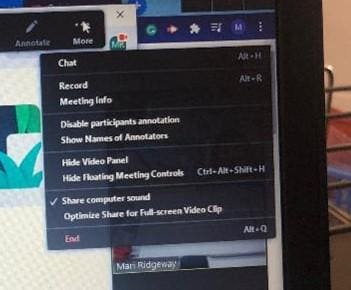
For a closer look, watch the how-to video below. To find out what system is best for your needs, contact us.


